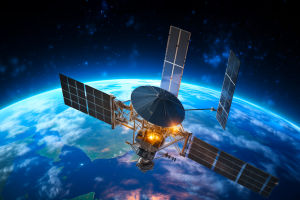Hello Lykkers, stepping aboard a gleaming airliner feels like entering a modern marvel: hundreds of tons of metal ascending into cerulean skies. Engines thunder as travelers settle in, while slender wings extend like polished steel feathers.
Beneath this everyday spectacle lies a tapestry of physics, history and engineering that transforms earthbound dreams into global journeys.
Historical Roots
In December 1903, the Wright brothers achieved gliding powered flight, covering 37 meters over Kitty Hawk’s dunes. Their breakthrough relied on lightweight wooden frameworks, fabric‑covered wings and a simple internal combustion engine. This triumph ignited a century of aerodynamic progress, from open‑cockpit biplanes to jets cruising at Mach 0.85 with carbon‑fiber composites and fly‑by‑wire controls.
Engine vs Wings
Jet turbines compress incoming air, mix it with fuel and expel hot gases rearward, aircraft forward. Yet propulsion alone cannot defy gravity—gliders and paper planes prove unpowered wings still harness lift. Engines supply forward speed, allowing wings to shape airflow and create upward forces that sustain flight above Earth’s pull.
Forces Balance
Flight stability arises from four counteracting forces: weight, lift and drag. In steady cruise, lift equals weight and equals drag, producing unchanging velocity and altitude. During climbs, it exceeds drag and lift surpasses weight; during descents, lift drops below weight, guiding safe approaches and landings.
Wing Design
Airplane wings have a special shape: a curved top and a flatter bottom. As the plane moves through the air, the top curves so air moves faster and creates less pressure than the bottom, which has higher pressure. This difference makes the wing push up, allowing the heavy plane to stay in the air.
True Lift
Lift isn’t just about air moving equally over both sides of the wing. It also comes from differences in air pressure and how air flows around the wing. Air hits the wing and splits into two paths, one going over the top and the other under.
According to Newton’s laws, when air is pushed down, the wing gets an equal and opposite force upwards, which helps lift the plane against gravity.
Downwash Effect
Every wing creates a downwash—a stream of accelerated air pushed toward the ground. Though less obvious than a helicopter’s rotorblast, this steady airflow underwrites lift. Conservation of momentum ensures that when air is forced downward, the wing receives compensatory lift, sustaining level and climbing flight.
Attack Angle
Pilots fine‑tune lift by adjusting the wing’s angle of attack relative to oncoming air. Small increases improve lift for takeoff and climb, but pushing beyond a critical angle—typically around 15°—induces airflow separation and a sudden loss of lift known as stall. Mastery of this angle underpins safe maneuvers.
Wing Vortices
At each wingtip, air spills around edges, forming swirling vortices. These mini‑tornadoes trail behind aircraft, influencing lift distribution and generating wake turbulence. Airports enforce spacing to avoid these invisible hazards, ensuring trailing planes steer clear of sudden jolts from vortex‑induced currents.
Lift Boosters
To boost lift at low speeds, most airliners deploy flaps and slats that increase wing camber and surface area. This modification amplifies pressure differences and downwash, allowing shorter takeoff runs and slower approach speeds. Retracting these devices reduces drag for efficient cruise phases.
Glider Flight
Gliders exemplify pure aerodynamics, soaring on thermal currents and ridge lifts without engines. Their high‑aspect‑ratio wings minimize drag while maximizing lift, enabling hours of silent flight over mountains and plains. Sailplane pilots harness invisible columns of rising air to climb higher than motorized planes.
Steering Planes
Turning an aircraft involves banking, where one wing dips lower than the other to direct lift sideways. This lateral lift provides centripetal force, bending the flight path into a curve. To counter reduced vertical lift during banking, elevators adjust the wing’s angle, maintaining altitude throughout the turn.
Conclusion
Unlocking flight’s secrets reveals how engines, wings and precise control merge into seamless journeys across continents. Next time turbines roar and cloud shadows race below, recall the invisible downwash, pressure shifts and angles of attack beneath the wings. Which aerodynamic principle will resonate with you on the next ascent into boundless skies?


